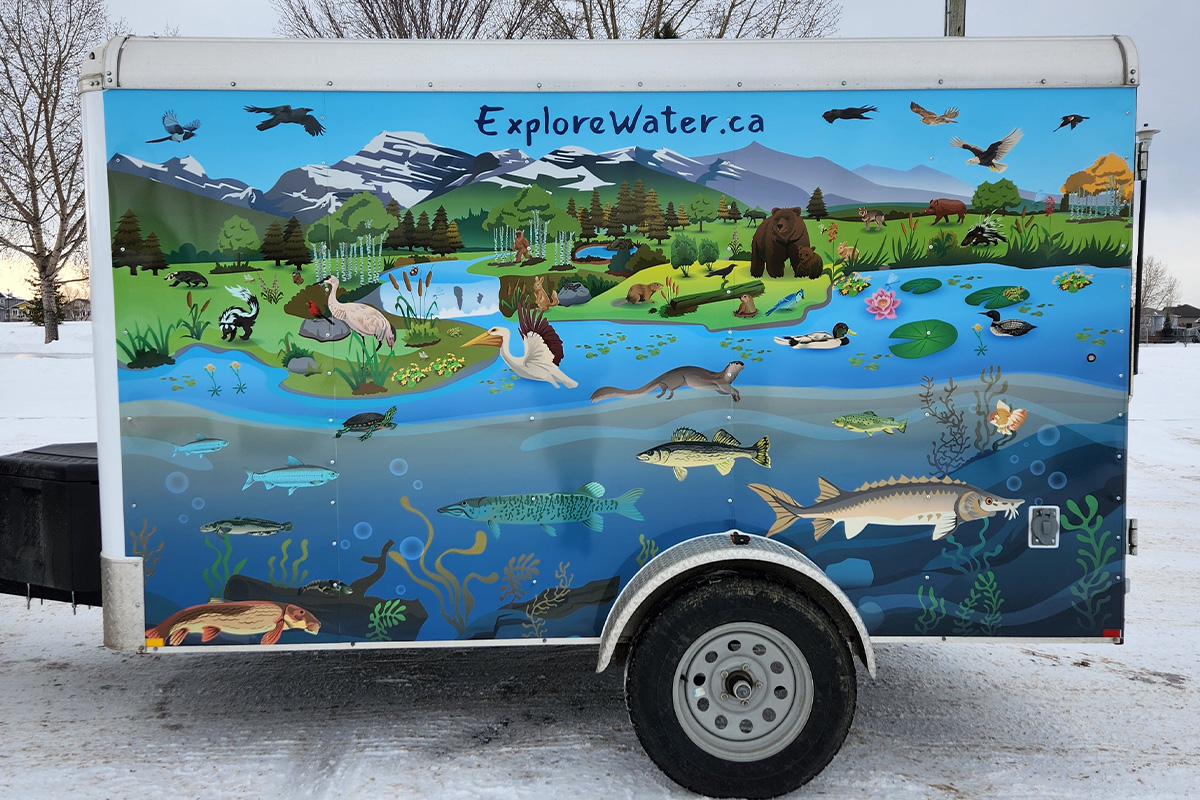When biological sciences prof Dr. Ross Shaw met Paula Polman, a partnership flowed naturally over their shared passion for water.
While landlocked Alberta may seem an odd place for the aquarium Polman was garnering support for that day, dive a little deeper and the reasoning behind it becomes crystal clear. “We may be an isolated province from the oceans, but the oceans don't care,” says Polman, the Aquatic Biosphere Project chair. “Regardless of where you are on this planet, the oceans affect us and we affect them. It's a closed loop.”
Dr. Shaw, who also sits on the Aquatic Biosphere Project board, describes the closed loop as the story of water in Alberta – and everywhere. It’s also how the aquarium will be designed.
“We plan to incorporate a path design that is linked with the water cycle,” says Dr. Shaw, who has worked with major public aquariums, including the ones in Monterey Bay and Vancouver. “As you go through the aquarium, you will follow a water droplet from the glaciers of the Rocky Mountains to lakes and rivers in Alberta and out via the major rivers to the ocean.”
Their goal for the aquarium – and the Aquatic Biosphere Project as a whole – is simple, says Dr. Shaw. “We hope visitors will walk along the path of water and experience the many ways it interacts with life in Alberta.”
Polman believes even before that walk, people have a lot of questions. “When you don't have places to go to ask those questions, they don't get answered, they don't get addressed and they don't get discussed,” she says.
So, as groundwork continues for a physical aquarium, the Aquatic Biosphere Project is answering those questions right now with The Minnow – a travelling exhibit and research facility that has come to life thanks to work with countless partners, funders and even MacEwan students.

Beginning in 2018, Dr. Shaw and Polman began working with MacEwan design students who joined the team to create the initial functional design for The Minnow. Since then, MacEwan business students' market research has been presented to funders and biological science students have been using an aquatic drone to conduct research into invasive species that will eventually make its way into the project's programming.
“Students are open-minded,” says Dr. Shaw. “And that comes out in their creativity with their projects.”
But the best university-community partnerships are a two-way street. As Polman says, “Students who work with us develop a scope of possibilities that wasn't even on their radar before – a bigger idea of opportunities in the environmental space and where they can be looking for jobs. They also tell us that they feel more connected to the issues of the day – that they can actually be part of the solution. And that makes them very excited.”
